Once you retire – do people know you are still active? Or think you are out to grass?
26 July 2019 By Victoria Tomlinson

I had a really interesting conversation with someone last week that got me thinking about a major issue once you retire.
Once you don’t have a ‘job’, how do you make sure your network knows you are still active, up for opportunities and very much part of the working world?
n this blog I want to share what the conversation was, the issues it raised – and then I will offer some ideas to address them.
I am in touch with two lovely people in their late 50s who used both to work at the same company. Let’s call them Michael and Marie.
My meeting last week was with Michael and at the end I said, have you seen Marie recently?
“No,” he said, “not for a couple of months. Actually I think she has retrenched back into doing odd bits of work for our old company and not much else.”
That surprised me so I said, “Not sure that is right. I think Marie has got a major piece of work in her consultancy and her business partner is away for the summer, so she is completely snowed under.”
That really surprised Michael and he was interested. And when I saw Marie at an event and asked how she was doing, her reply confirmed everything I thought, “I am doing that major piece of work and loving it. Got loads on and with my investment and non-executive director activities too.”
So a former colleague thinks Marie is essentially doing almost nothing – and certainly nothing particularly new or different or even interesting. But actually, Marie is flying – she has just got her head down and getting on with all sorts.
The trouble is – the outside world doesn’t know any of this? And in that time she is off people’s radar with a sort of subconscious thought, almost, of ‘out of circulation’. The risk is that if a really interesting role comes up or a new project or even work for the consultancy, Marie may no longer be front of mind. And if she doesn’t make an effort to alert her network that she is very active, in due course will people forget her? It sounds quite brutal, but it is life?
What can you do?
We are back to LinkedIn! (I have been writing a series on how people can use LinkedIn strategically in unretirement – have a look at 8 LinkedIn essentials for a winning (unretirement) profile and 7 inside secrets to making LinkedIn really work – and this is really a follow-on from these).
How to post on LinkedIn
If you post information on LinkedIn fairly regularly, this tells a lot of your network what you are up to. Of course you can’t just say, “Hi everyone, I am active” – so how do you do this?
Let’s start with posting. I am realising that not everyone knows what posting means or how you do it. Go to your home page and you will see this box at the top where it says ‘start a post’.

Click on it and this box will pop up with ‘What do you want to talk about?’. Just start typing whatever you want to share, the blue button saying ‘Post’ will then go live and when you are ready you press Post and you are done. It will then appear as an activity on your profile that everyone can see. You can also add a document, video or photo by clicking on those images at the bottom and you can then add something from your computer/iPad.
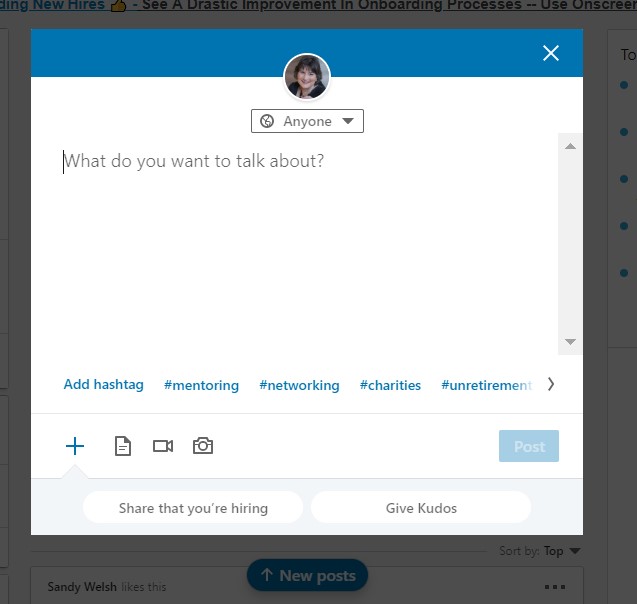
What happens to a LinkedIn post?
As an example, Next-Up held a summer party last week, so I posted a photo from the evening and thanked our sponsors, Diane Watson of Sovereign Wealth and Wrigley’s Solicitors, tagging them in (more on that later). This is how it looked. To be honest I was rushing off to a day of meetings in Leeds, so this was done hastily – I could have tagged more people and done a better comment but it was fine for the purpose.
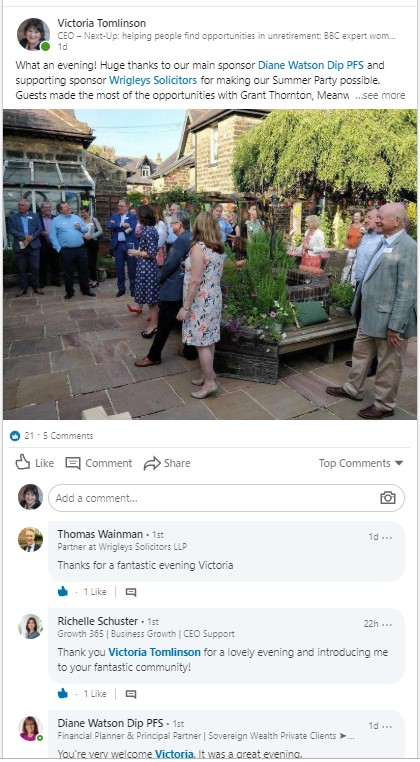
This post, and another we did which was sharing a video from our speakers on the evening, got 900+ views and six comments – by people who nearly all have 500+ contacts in their networks. This way you are reaching a couple of thousand people at least.
I made a bit more of an effort when sharing the first of the LinkedIn blogs on LinkedIn and that has got 3.3k+ views so far and 11 comments, again from people with very wide networks.
Do views and comments on LinkedIn really work?
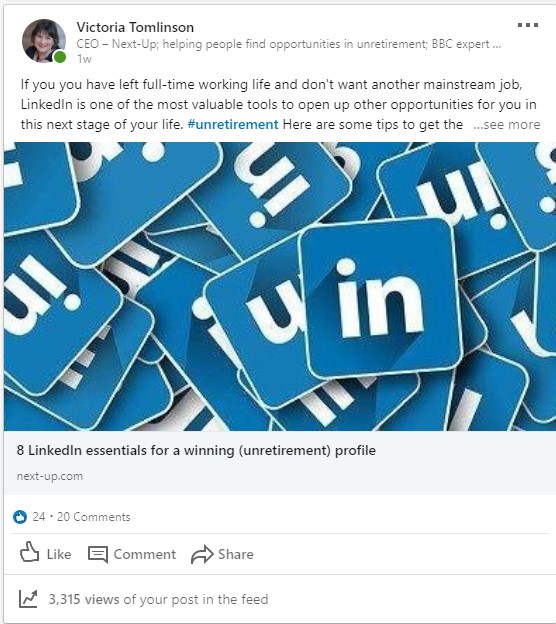
I can hear a lot of the unretirement generation saying, “Well so what? Large numbers don’t mean anything in themselves”. And I agree.
But some of the comments came from people I didn’t know and are potential future clients. And for the rest, people will know that we are now working with a lot of partners in professional firms. I dropped this comment into the blog – see below. We are gently building our brand in this market and letting people know that the tentative conversations we started having six months with big 4 accountancy firms and others have now turned into active work.

Building your active brand on LinkedIn
What can you do to tell people that you are busy and active, without being ‘look at me’ and tacky?
One of the points I have been emphasising in all these blogs is that you don’t want to focus on yourself but on other people, especially those you are targeting to do business with – whether that is getting roles, projects or other.
And this same rule applies to letting people know you are busy.
I mentioned to Marie about the conversation above and she was very thoughtful – got the point immediately. I suggested she could post things on these lines
- Working with such an interesting, fast growing company. We are seeing a new trend in the market at the moment of …… Has anyone else seen this?
- Can anyone help? A client of ours is researching/sourcing xyz – any suggestions or experience in this market?
This way you aren’t revealing confidential information about a client, but you are letting people know you are doing an interesting project. And you are being very ‘social media’ by asking for help/information/suggestions etc. People love to help with these sorts of requests. (That is also good to remember for yourself – to respond and help when you see these requests from other people, if you can. It’s good to be generous)
Here are some examples of what others are doing on my stream today – thanking, sharing, congratulating and more. They all tell people you are active.
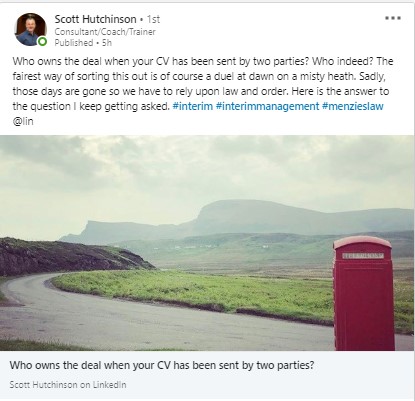
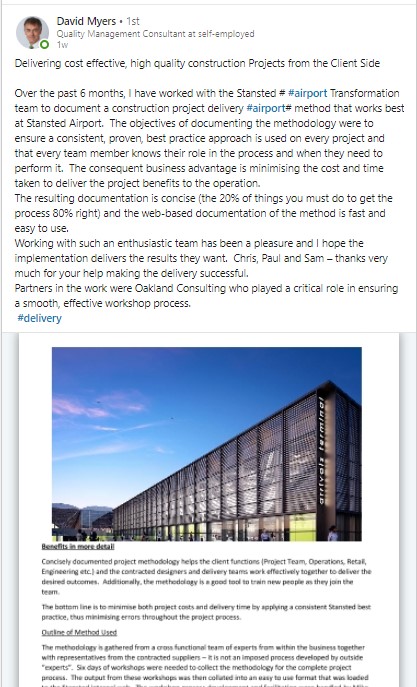
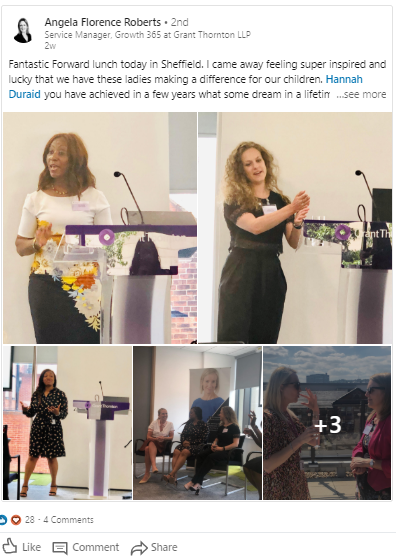
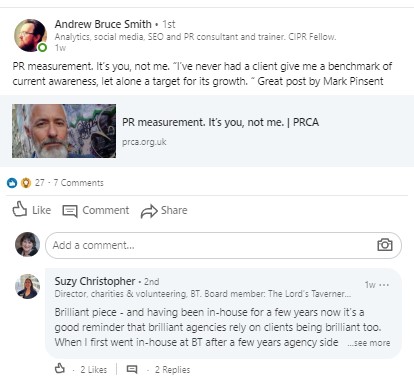
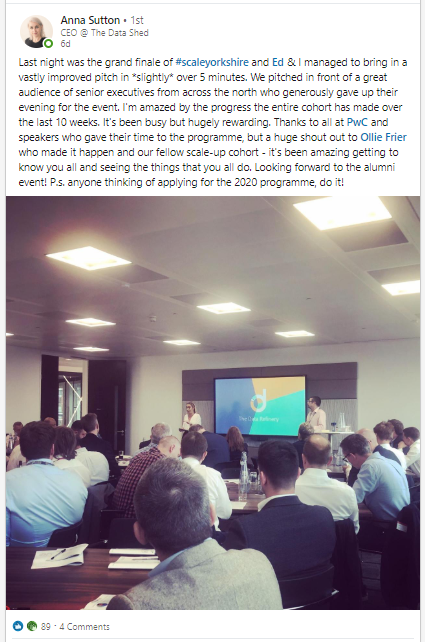
How to tag people on a LinkedIn post?
If you look at the above posts, you will spot a couple of names appear in blue – Hannah Duraid and Ollie Frier. They have been tagged and LinkedIn will send them an alert to say they have been mentioned in a post. Few people will resist checking out what has been said about them?!
The chances are they will read the post and some will like it, share it and add a comment. It is a way of engaging with key people you want to stay in touch with and a really good way when you are thanking people so they spot it. If they share the post – which some will – you are also being seen on a much wider network.
How do you tag? When you are writing a post you write the person’s name that you want to tag as @ollie_frier and the name should show up below. Click on the right name and it will be tagged in the post. This is still a slightly creaky feature on LinkedIn – it doesn’t always find the name you want in which case just write the name and maybe send them an email to say you have mentioned them! The old-fashioned way.
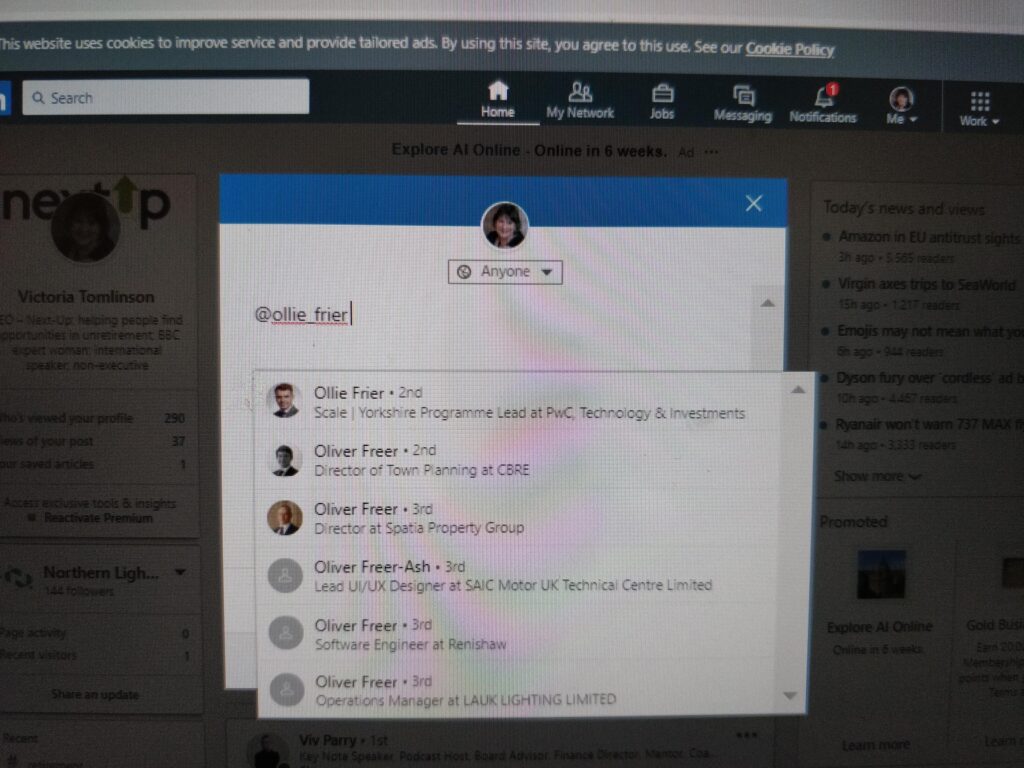
You can also tag the company they work for (the company will get an alert similarly and might share it).
And you can add in a relevant hashtag. LinkedIn does suggest hashtags for your post. I was notified by LinkedIn that our first blog on LinkedIn was trending on #retirement – so anyone who is searching for articles, information, companies or whatever specialising in retirement, may come across my post.

All this gives you a huge resource to stay in touch with your network and let them know you are active in unretirement. I cannot tell how many times I meet someone and they say ‘I spotted you did a summer party, how did that go?’ or ‘I found your blog on LinkedIn really useful’. I have no idea who is looking at our posts, but time and again I find that quality people are reading, registering what we are doing and gently building a relationship with us – without us necessarily ever knowing. Until one day the phone rings!
But perhaps I should just add a final comment – as with all networking you need to be subtle. Don’t tag someone every week, don’t ask people to share all the time. Make your posts as helpful and useful to others as possible, with insights, and ring the changes as to what you post and how. And then people will enjoy reading what you share and may want to do business with you one day.


